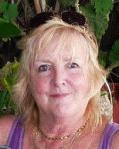 On the recent Goddess Pilgrimage to Crete women had the option of riding up a winding road on a mountainside in the back of a farm truck singing “She’ll Be Comin’ ‘Round the Mountain” or could choose to go with the guard in his closed automobile.
On the recent Goddess Pilgrimage to Crete women had the option of riding up a winding road on a mountainside in the back of a farm truck singing “She’ll Be Comin’ ‘Round the Mountain” or could choose to go with the guard in his closed automobile.
That evening one of the older women who had chosen to ride in the car said, “I saw how much fun you were all having, but I have done that before. This time I was happy to let the rest of you do it.”
“That’s exactly how I feel about death,” I responded. “Some people want to live on after death, but I don’t. I am happy to let others do it. The only thing that would upset me would be if life did not go on after me.”
On the Goddess Pilgrimage we remember the dead in an ancient Cretan tholos tomb. The tholos tombs of ancient Crete are round. They were roofed and entered by a low narrow passageway. A heavy slab was used to seal the entrance. These were communal tombs, used and reused for centuries by small farming communities.
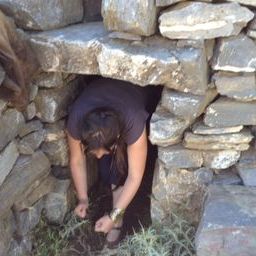
The bodies were placed in the tomb in a fetal position, either laid out on the floor of the tomb or in a small wooden box or more rarely in a ceramic box. Grave offerings were few and simple, a comb, a knife, a small piece of jewelry, a small figurine. There was no indication of rank or status, and grave offerings for males and females were the same
After the bodies had decayed the bones were removed to ossuaries, sometimes to bone rooms adjoining the tombs, in other cases placed in caves.
In Orthodox Christianity in Greece today secondary burial is still practiced. After death, the body is buried in the ground in a wooden coffin. Three to five years later the body is dug up, and if the flesh is fully decayed, the bones are washed and removed to a communal ossuary. In my village the bones are placed in a small box which is set on a shelf in the bone room next to the cemetery. Orthodox Christian belief is that these bones will rise when Christ comes again. Anthropological studies suggest that many Greeks believe death is final.
When I think about the death rituals of ancient Crete, I imagine that the round tomb with its narrow entrance was understood to symbolize the womb of Mother Earth. We are born through the narrow passageway of our mother’s bodies. In death we return through a narrow passageway to the womb of the Great Mother who accepts us back into Her body.
Small ceramic dioramas found in the tholos tomb at Kamilari suggest that baking bread and stamping grapes in a sacred way were followed by communal rituals in which bread and wine were shared with the ancestors.
In the death ritual on our tour, we crawl through the narrow entrance of a now roofless tholos tomb. Inside we create an altar with flowers and images. Each of us approaches the altar saying, “Remembering [my baby brother Alan, my mother Janet, Aunt Mary Helen, Uncle Ray, Aunt Lorraine, Mr. Nikos, Xarilambos and little Arseni…]” while pouring libations of milk and honey, water and wine. The others respond, “Let us bless the Source of Life, and the cycle of birth, death, and regeneration.”
On a recent episode of the UK version of “Who Do You Think You Are?” a young British man of mixed race journeyed to Africa in search of his ancestors. As he was welcomed into his tribe, the chief told him, “the ancestors live in us.”
There is no doubt that both our good deeds and our bad deeds will continue to influence the web of life for generations. The sins of the fathers are indeed passed down for seven generations. But so is love. We love because we have been loved. Communities that honor the ancestors recognize that life is a gift that must be passed on. In their rituals, they thank the ancestors for the care and generosity that has nurtured the seed of life through the generations.
It is said that the ancestors draw near as summer turns to winter.
I invite you to gather photographs and other things that remind you of your ancestors—both physical and spiritual–on a table in your home in the coming days.
Add fruits and flowers and a pitcher and a large bowl.
Pour libations into the bowl saying, “Let us bless the Source of Life and the cycle of birth, death, and regeneration.”
Also see: Why Death is on the Minds of Many Major Religions This Month.
Carol has just returned from a life-transforming Goddess Pilgrimage to Crete–early bird discount available now on the 2015 tours. Carol can be heard in a recent interviews on Voices of the Sacred Feminine, Goddess Alive Radio, and Voices of Women. Carol is a founding voice in feminism and religion and Goddess spirituality. Her books include She Who Changes and Rebirth of the Goddess and with Judith Plaskow, the widely-used anthologies Womanspirit Rising and Weaving the Visions. Follow Carol on GoddessCrete on Twitter.
Discover more from Feminism and Religion
Subscribe to get the latest posts sent to your email.


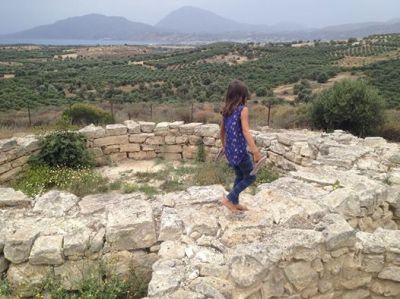
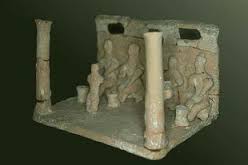

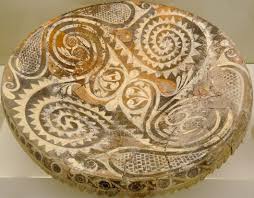
very historical and impressive presentation – You might consider to visit Jerusalem.
LikeLike
Who says, “…the ancestors draw near as summer turns to winter.”? I thought the Greeks believed death was final.
You say you are not interested life after death, but would your spirit be willing to hover around afterwards and help the living avoid getting into worse trouble than they set themselves up for? An ameliorating spirit, so to speak?
LikeLike
So beautiful, Carol. Thank you!
LikeLike
Charles Dickens knew that the ancestors draw near. Even though the Ghosts of Christmas Past, Christmas Present, and Christmas Yet to Come in A Christmas Carol are not named as anyone’s ancestors or relatives, he and apparently many of his readers (and maybe also the people who came to hear him read the book when he took it on tours) knew that death is not the end. Scrooge died that night, spent some time in what we might imagine as a sort of tholos tomb (his curtained bed), and was reborn a better man. The ancestors do indeed start returning about now–at what we called Hallowed Evening–and if they want to, they keep coming to visit us until the winter solstice. Thanks for writing a lovely blog about ancient and modern celebration.
LikeLike
Thanks Carol, love your sharing about “Comin’ ‘Round the Mountain.”
Also, maybe a small detail, but much meaning embedded in your last illustration of the Kamares style fruit bowl, with its geometric patterns. Wikimedia Commons has a gorgeous enlargement (from Phaistos, Crete, 1800-1700 BCE). The double paisley forms, on the outer rim, have been thought to be double womb forms, possibly representing the double goddess, Demeter and Persephone.
LikeLike
Sarah, when I saw the fruit bowl in Carol’s blog post, I immediately asked myself if the paisley forms were Demeter/Persephone?! Could you please post the link to the Wikimedia Commons enlargement? Thanks in advance.
LikeLike
Can’t find it now. Search “Kamares style fruit bowl” at Google it comes right up.
LikeLike
Can’t find it now, just put in a search at Google for Kamares ware style fruit bowl – it comes right up.
LikeLike
I found it, Sarah. Thanks.
LikeLike
I interpret the images on the Kamares bowl as seeds and seed pods sprouting into the spiral of life. But multiple meanings are always possible.
LikeLike
Reblogged this on Jessica A Bruno (waybeyondfedup).
LikeLike
thank you for your beautiful writing, carol!! …and blessings on your hallows …:)
LikeLike
Thank you for this most interesting post highlighting the death rituals of ancient Crete. I was not aware of the continuity of many of these rituals until I read a poem entitled Lament: Moirologia by Joy Manesiotis in her collection “They Sing to Her Bones”. I trust she won’t mind me sharing it with you.
“The women throw themselves back and forth,
their bodies young saplings in wind, but they are
close to the grave and they sing to death: Oh slowly,
oh mournfully, I will begin lamenting
spirits rising to wail with them, the ghosts of their voices
loosed across dusty paths, paving stones traced in white.
shouting out your sorrows, Mother–one by one! rising
and rising, the pitch of voices a high wind
on the mountain, a breath winding the olive groves, the keen
pushing against the blue doors, against the cool mud wall
of the church, the women s voices as one, pushing
against the men s dark clothes, the priest’s slow footstep:
the men shuffle in the corner, the women fall back
and forth, dragging nails across their cheeks, Ah Mother!
you knew how to embroider the sky with all its stars!
they sing to the one who has passed over, they sing
to her hair turned white, to her hands broken in work.
They sing to her bones. First they must bury her. Day after day
they will clean the grave. Month by month. Washing,
washing. My mother has travelled far away.
One day they will roll back the dirt. They push back
the dirt. They reach in, fingers against bone. And they lift
her bones, one by one, sweet digits of her fingers, bowl of her pelvis:
To whom can I call out? they wash her bones, they rinse
each one. Cradle her skull. Her skull
passed from hand to hand, soothed in each lap, rough
palms cupped over the crown. Ah Mother!
And who here will say the women cannot sing to her now?”
“Note: Moirologia are Greek funeral laments composed and sung by women, now discouraged by the Church. The lament sections used here (italicized lines) are from Anna Caraveli-Chaves, “Bridge Between Worlds: The Greek Women’s Lament as Communicative Event,” Journal of American Folklore: 129-157.”
LikeLike
Thank you for posting this poem, Nick. I love it!
LikeLike
Reading this felt so right after attending an interfaith service last night organized by a nonprofit called Faith Action for Community Equity (FACE). http://facehawaii.org/ In working towards advancing legislation to ensure long term care for all, especially those who cannot afford it, they held a service called “Proverbs from our Families,” sharing wisdom remembered from our kupuna (elders.)/ Not unlike “Our ancestors live in us.” Thank you for a beautiful post.
LikeLike
Eloquent sharing of beliefs and our lovely pilgrimage ritual…
LikeLike
northwestern indigenous tribes consider winter as grandma/grandpa time…appropriate to paying special attention to messages from them
LikeLike